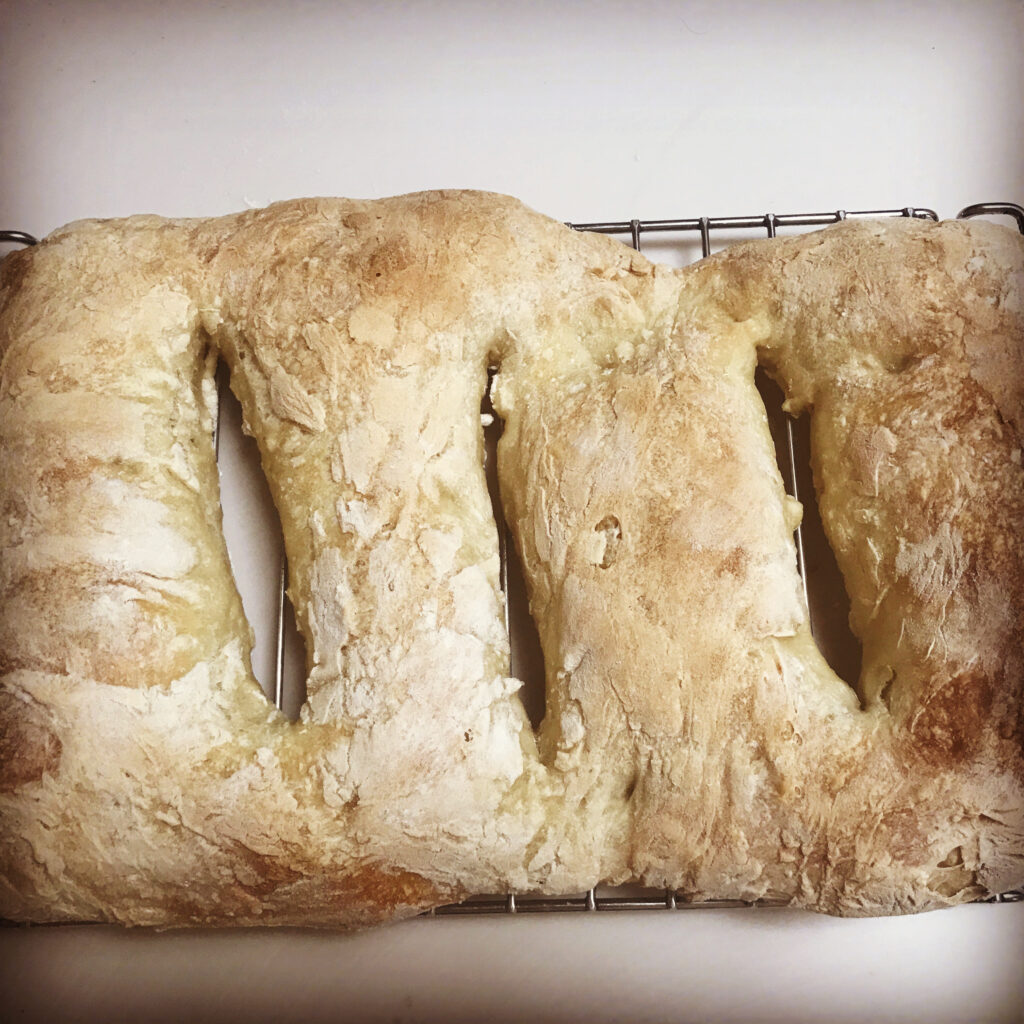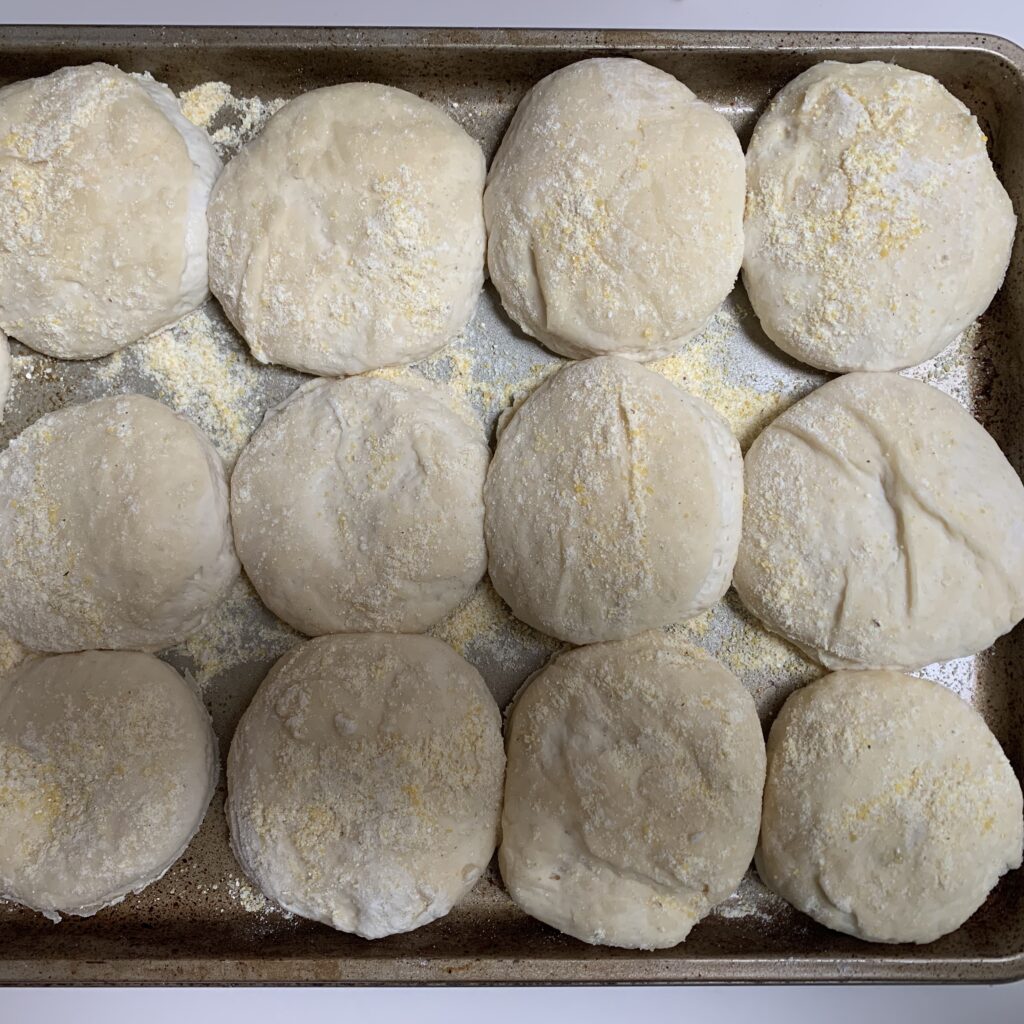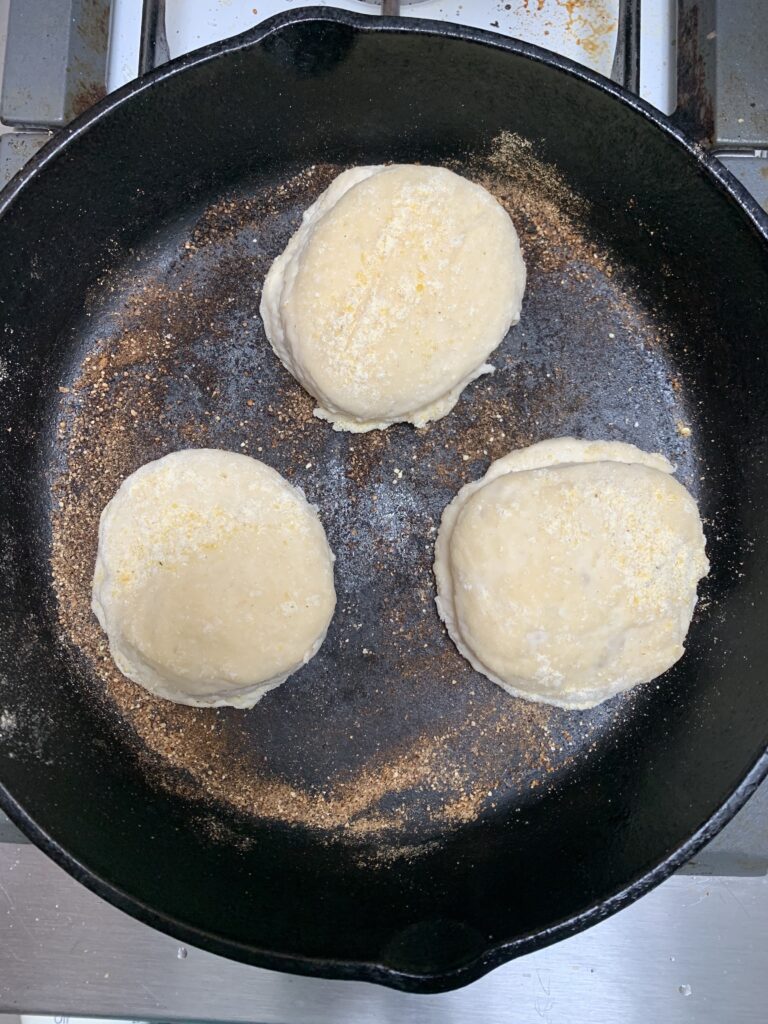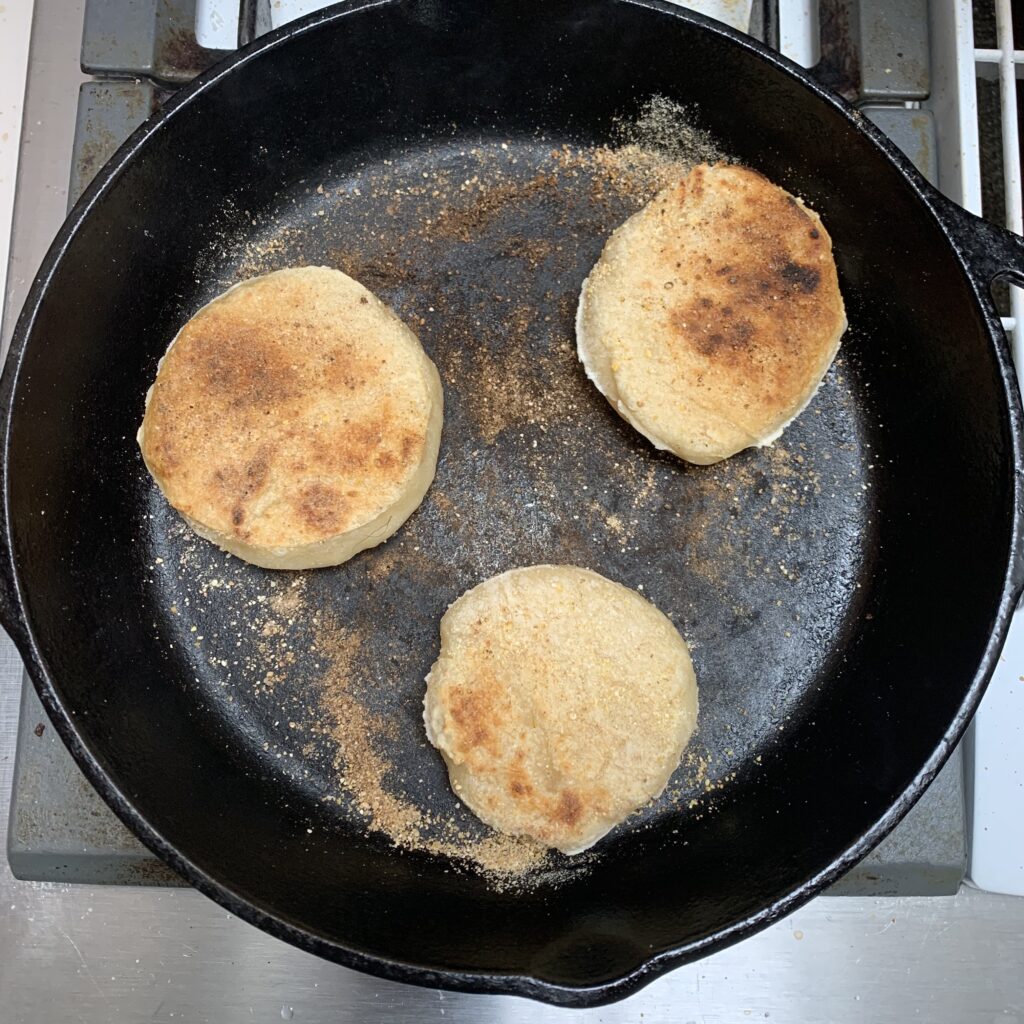Once I moved past the basics of sourdough bread, my first project was to make sourdough english muffins. Arizmendi Bakery makes incredible sourdough english muffins, and I was eager to try them at home. Once made, they are easily sliced and frozen. Then, all you need to do is toast one and spread some butter or preserves for a simple yet delicious breakfast!
Step 1: Start Leaven and Poolish
10-12 hours before you make the English muffins, mix a leaven and a poolish in two separate bowls. The poolish rises faster than the leaven so put the poolish in the fridge overnight and take it out a few hours before you start prepping so that it can warm up.* They are both ready for the next step when they pass the float test (Drop a bit of the mixture into a cup of water. If it floats, it’s ready. If it sinks, it’s not).**
Leaven
- 1-2 tbsp mature starter
- 300 grams of all-purpose flour
- 300 grams water (~80 degrees F)
Poolish
- 3 grams active dry yeast
- 250 grams of all-purpose flour
- 250 grams water (~80 degrees F)
* The leaven needs longer to rise so you can also just make the poolish 3-4 hours before the leaven is set to be ready and not refrigerate it.
** If you can’t quite get one of the mixtures to pass the float test, you can speed up the process with some light heat. I usually stick the leaven and/or poolish in the oven at 150 degrees F for 15-30 minutes (until it passes the float test). Also, on that note, I don’t recommend using leaven that has been in the oven to perpetuate your core starter. I’ve had some bad experiences with starter after it’s been in the oven (it seems to mold after a few days and then I have to start over). Therefore, I recommend just feeding your starter as normal after you start the leaven and storing it separately.
Step 2: Mixing the Baguette Dough
Ingredients
- 400 grams leaven (see step 1)
- 500 grams water (~74-76 degrees F)
- 400 grams poolish (see step 1)
- 650 grams all-purpose flour
- 350 grams bread flour
- 24 grams salt
Once the leaven and poolish pass the float test, pour the warm water into a large mixing bowl. Add the poolish and the leaven and stir to disperse. Add the all-purpose flour and the bread flour. Mix thoroughly with your hands. Let the dough rest for 25-40 minutes. Add the salt (I usually add the salt with 50 grams of water and pinch it into the dough). Here’s a tutorial video for some mixing technique:
Step 3: Bulk Fermentation
Let the dough rise for at least 3-4 hours. Turn the dough twice during the first hour (so once after 30 minutes and once after 60 minutes). Here’s a tutorial video for turning the bread:
Step 4: Shaping the English Muffins
- Stretch the dough out on a towel or 1-2 large cookie sheet(s) so that it’s a 0.5 – 1 inch thick rectangle and allow the dough to rest for 10-15 minutes. This is a good point to refrigerate the dough if you are preparing the dough the night before. Just take the dough out of the refrigerator 30 minutes before moving to the next part.
- Cut out each muffin using a 3-4 inch round cookie cutter (I use a cup). To use the leftover scraps, just reshape them into a large round and let it sit for 30 minutes before repeating the process.
- Let the cut out muffins rest on a cornmeal coated surface (e.g. a cookie sheet) for at least 2 hours.
I like to let the dough rest as much as possible to maximize the volume of the English Muffins. Ideally, I stretch the dough onto a cookie sheet before going to bed, let the dough rest on the cookie sheet in the refrigerator overnight, cut the muffins in the morning, and then let the shaped muffins sit for the day to rise a bit more.
Step 5: Baking
Preheat a large cast-iron skillet over medium-low heat for ~5 minutes. Sprinkle cornmeal on the heated pan. Reduce heat to low, place 3-4 muffins in the pan, and cook for 4 minutes on each side. Transfer to a wire rack to cool.
This step may require adjustment depending on your range. I personally struggle to avoid burning the muffins. As you determine what works best for your stovetop, here are a couple things to consider:
- If you find the muffins are under-cooked, try extending the cooking time to 5-8 minutes on each side. Alternatively, you can try pre-heating the pan on medium heat and cooking the muffins over medium-low heat.
- If you find the muffins are getting burned, try reducing the heat as much as possible. Alternatively, you can instead use ghee (clarified butter) instead of cornmeal.
Resources
If you are interested in learning more about making English Muffins, here are three resources that I recommend:
Fougasse

To make a fougasse, take 500g-700g (~1/3) of the dough between steps 3 and 4, stretch it into a rectangle, and let it sit for 2-3 hours.
To bake, preheat a pizza stone to 475 degrees F. Make incisions in the dough, transfer to pizza stone, and bake for 20-30 minutes. For supply recommendations, see my pizza post.


